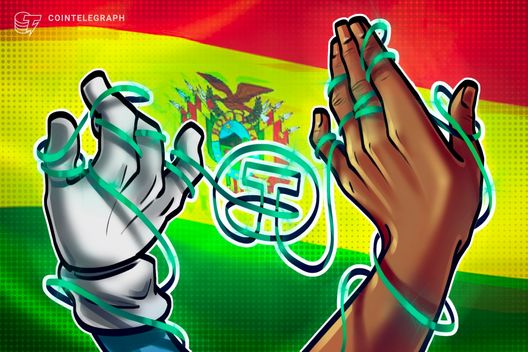
Tether, one of the most popular stablecoins in the cryptocurrency market, is making waves in Bolivia as its CEO, Paolo Ardoino, recently shared images of duty-free goods priced in USDt. This move indicates the stablecoin's increasing influence as a reference currency in the country's challenging economic landscape.
Bolivia, like many countries around the world, has been facing economic hardships, including high inflation rates and currency devaluation. In such uncertain times, stablecoins like Tether provide a reliable alternative for conducting transactions and preserving value.
The images shared by Ardoino showcase how merchants in Bolivia are starting to adopt USDt as a pricing mechanism for their goods in duty-free shops. This development not only highlights the stability and trustworthiness of Tether but also signals a growing acceptance of cryptocurrencies as a means of conducting everyday transactions.
Stablecoins are digital assets pegged to a stable reserve asset, such as the US dollar, to minimize price volatility. This feature makes stablecoins like Tether an attractive option for individuals and businesses looking for a secure way to store and transfer value without being subject to the fluctuations commonly associated with traditional cryptocurrencies like Bitcoin.
Tether's role as a reference currency in Bolivia could have far-reaching implications for the country's economy. By using a stablecoin like Tether, businesses can mitigate the risks associated with the Bolivian boliviano's volatility and inflation, providing a more stable pricing mechanism for their goods and services.
Moreover, the adoption of USDt in Bolivia could lead to increased financial inclusion for individuals who may not have access to traditional banking services. Cryptocurrencies offer a decentralized and borderless financial system that empowers individuals to participate in the global economy, regardless of their location or financial background.
As Tether continues to gain traction in Bolivia and other countries facing economic challenges, it underscores the growing importance of stablecoins in the cryptocurrency ecosystem. These digital assets provide a reliable and efficient way to store and transfer value, offering a viable alternative to traditional fiat currencies in unstable economic environments.
In conclusion, Tether's emergence as a reference currency in Bolivia reflects the increasing adoption of stablecoins as a reliable and secure means of conducting transactions in a volatile economic climate. As more businesses and individuals turn to stablecoins like Tether for their financial needs, the role of cryptocurrencies in shaping the future of global finance continues to expand.

Leave a Reply